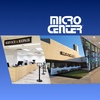The loss of manufacturing jobs contributed to a period of neighborhood decline marked by high unemployment and building vacancy rates, residents say.
"Without the influx of factory jobs, when [parents] died, their kids moved out," Maddalo says.
"Just walking to Lechmere train station, You could see it was becoming a creepy, desolate area," says Jeannie Straim, director of economic development for Cambridge Community Development.
In 1978, Cambridge officials authored a plan which targeted $150 million in federal, state and private grants to help revitalize the local economy.
The plan, which devoted funds to restore Lechmere Canal, build a 16-acre park along the canal, widen the main streets and construct or repair over 1000 housing units, served as a major catalyst for new development, Straim says.
Renovations of abandoned factories have created more than 3.9 million square feet of office space since 1980. City records show that only 7.4 percent of available space is vacant, making East Cambridge the most attractive commercial area in the city, Straim says.
The 1990 opening of the CambridgeSide Galleria and the construction of three large condominium projects--Thomas Graves Landing, River Court and the Esplanade--have provided additional retail and residential space, she says.
"There is a lot of spin off from MIT," Bruner adds." [The area] is attractive to upstart businesses and established businesses."
Tale of Two Cities
East Cambridge stretches from the Charles River to the Warren Street railroad tracks and is bounded by Broadway Street and the Cambridge-Somerville line.
The area's office and industrial space is anchored at One Kendall Square and winds its way along Edwin Land Boulevard and Third Streets. Most new commercial development rests between First Street and the river, leaving the balance of the neighborhood for residential dwellings.
"There are really two neighborhoods in East Cambridge: the traditional residential areas and the emerging luxury areas on the outskirts," Brockman says.
Many say there is little interaction between long time East Cambridge residents and the newer residents living in the upscale developments, which cost at least twice the price of most residential homes in the area.
"There are lots of entrenched older families here," says Melissa Glick, assistant director of the Cambridge Multicultural Center on Second Street ."They don't like change; they tend to stick with their old ways of life."
Glick says only a handful of locals come out to watch the dozens of annual performances given at the Multicultural Center, which has operated at the historic Bulfinch Square courthouse complex since 1986.
Read more in News
Fear and Loathing on Long Island












